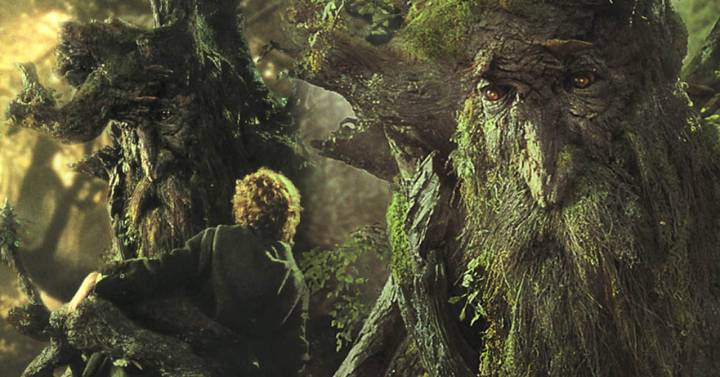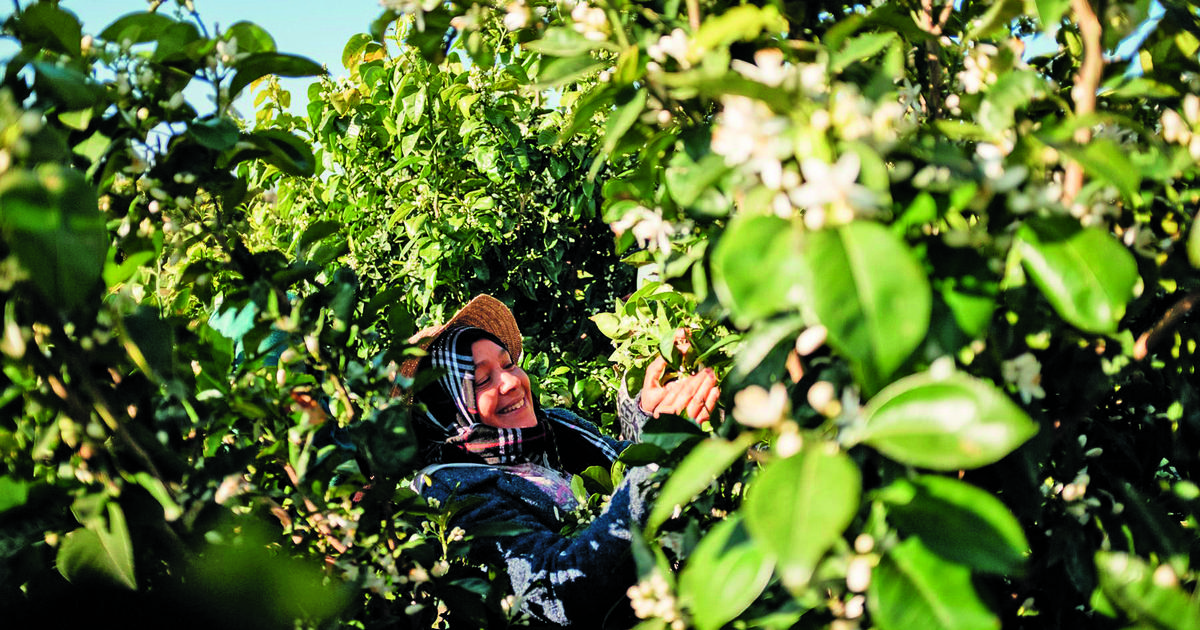The Middle Ages is not only the time of knights and ladies, of serfs and lords, of tournaments and kings, it is above all the age of the forest and trees. In one of his first essays, Warriors and Peasants , the great French medievalist Georges Duby writes: “The proximity of an immense forest is noticeable in all aspects of civilization: we can find its mark both in the theme of courtly romances and in the forms invented by Gothic craftsmen. For the men of that time, the tree is the most evident manifestation of the vegetal nature ”.
The forest, its forms, its creatures, its legends, its glades, but also wood as an omnipresent element in everyday life, occupy the vital and imaginary space of the medieval world. Until the year 1000, as the medievalist of the Higher Council for Scientific Research (CSIC), Ana Rodríguez, has studied, it did not begin to build in stone again. Until then send the wood. “The Knights of the Grail, says the legend, said goodbye to King Arthur and one by one they entered the forest, away from roads and paths, ready to continue their own adventure. The forest is a central character in Merlin's Story(Siruela) ”, this researcher wrote in Babelia about one of the great myths of the medieval world, the magician of the Arthurian cycle who has been reincarnated as characters like Gandalf in The Lord of the Rings .
Trees and books
Freedom was a chestnut for Anne Frank
Baobabs, African giants and the nightmare of 'The Little Prince'
Of the many film versions that have been made of that primeval story , Excálibur , by John Boorman, best describes the role that the forest and trees have in the figure of Merlin, whom Carlos Alvar describes in the introduction to the aforementioned volume. as "a mixture of prophet and savage, raised in the woods, on the fringes of all society." “In Arthurian novels,” Alvar continues, “heroes are born and raised in the forest and return to him when they fail in adventures, in search of refuge, or when they go mad. For medieval man it is the place of the most terrible powers: there are no rules and all wonders can be produced there. The forest is above all loneliness and infinity ”.
Few medieval texts reflect so crudely the dangers that the infinite solitude of the forest entails as El cantar del Mío Cid, in its third canto, 'La afrenta de Corpes'. The evil infants of Carrión want to take revenge on the Cid by torturing his daughters, whom they have married. His plan is to stay alone with them, attack them savagely and leave them abandoned. And the place they choose to carry out their plan is a forest, where they know they will not be discovered. “They are already entering the oak grove of Corpes: towering trees, whose branches climb the clouds, and surrounded by abundant beasts. There they found an orchard and a clean fountain and ordered to plant the tent ”, describes the narrator (a modern version by Alfonso Reyes in the Austral edition based on the old text by Ramón Menéndez Pidal).
The forest is at the same time the dangerous place, of the beasts and the attacks, and the space of the life, with the water and all the resources of the nature, like the hunting. And precisely for that reason it is a perfect place for outlaws, such as the Robin Hood gang, another of the great medieval myths associated with the forest and trees. In fact, one of the film versions - Kevin Costner's from 1991 - uses one of the most famous trees in England: the so-called Sycamore Gap on Hadrian's Wall. In the classic version of 1938, directed by Michael Curtiz, Sherwood Forest prevailed as another protagonist alongside Errol Flynn and Olivia de Havilland.
Beyond its mysteries, its beasts and its solitudes, the forests also represent a space for gallant love, sometimes secret. "The epic and courteous lyrical takes place in the shade of the trees, which grow both in the gardens and in the literary forests," explains Santiago Beruete, anthropologist and philosopher and author of Jardinosofía (Turner). "Those become a privileged setting for sentimental courtship, a place of delights and a visual metaphor of the good life, and these serve as a refuge for passionate lovers, who challenge current morals like Tristan and Isolde."
The French scholars Sylvie Bépoix and Hervé Richard recently published a collection of essays under the title La forêt au Moyen Âge ("The Forest in the Middle Ages", Les Belles Lettres), which deals with the idea of the trees in that period, which lasted for almost a thousand years, from the fall of the Western Roman Empire to the Renaissance. They appear in poetry, in literature, in hagiographies, in architecture, economy, crafts, hunting ... The book explains how the Middle Ages inherited the three types of forest from the Romans: the lucus , a group of trees that have a religious dimension; the nemus , an orderly set of trees; and the silva , dense and virgin of human interventions.
The mediaevals had an enormous capacity to exploit the resources of the forest, but they never exhausted them as happened centuries later with the industrial revolution. The forest was infinite and the wood was at the center of life. In his Symbolic History of the Western Middle Ages (Katz), the great researcher on animals, colors and symbols Michel Pastoureau explains that "in medieval culture wood is above all a living matter". "It is difficult today to represent the place that wood occupied in material life and in the daily universe of the Middle Ages because those wooden objects and monuments have only come down to us in a very limited way, negligible compared to those made of stone. or metal. But we know that until the 15th century its place was immense, especially in northern and northwestern Europe ”.
In his research, Pastoureau reveals that not all trees were the same, that some were beneficial and others malefic and that, in many cases, they are customs inherited from classical antiquity, an invisible trace of the past. The linden, for example, was "a tree especially admired by medieval populations." "They first admired its majesty, its opulence, its longevity," says the historian, who points out that it was also venerated for its pharmaceutical properties and that is why they were planted near hospitals, but also in front of churches. Another very important beneficial tree was the ash, which the Germans considered to mediate between heaven and earth and which was used for the elaboration of most medieval weapons: spears, arrows, javelins.
As for the malefic trees, two occupy a particularly important place: the yew -which nevertheless in many Spanish populations is considered a sacred and community tree-, because it is associated with the other world, as is clear from its German name ( todesbaum ) or Italian ( albero della morte ), but especially walnut. It is a nefarious tree in the medieval imagination, dangerous, under which you should never sleep. However, Pastoureau explains, that bad reputation does not reach either its fruits, the walnuts, or its wood, highly appreciated by artisans, nor its roots, used to achieve a very rare dye at that time: black.
Eduardo Barba, landscape gardener, botanical researcher in works of art and author of El Jardín del Prado (Espasa), has investigated this symbolic value in painting. “The idea of the tree of good and evil and the tree of life are of paramount importance in many works. For example, in Fra Angelico's The Annunciation , four trees of good and evil appear, which we always identify with the apple tree, but in the Christian tradition there are also the pomegranate, the fig tree and the orange tree, which was well known in medieval Europe. as a symbol of lust, with that big and juicy fruit and a flower with a very special smell ”.
Tolkien and the Fangorn Forest
JRR Tolkien used all his deep knowledge of the medieval world to recreate in The Lord of the Rings the power of the forests with Fangorn and the beings that inhabit it, the Ents, those living trees that can fall asleep forever and stop moving and walk always looking for female Ents, who seem to have disappeared. The film version renounced this subplot, which reflects one of Tolkien's obsessions, the danger that the modern world represents to forests. The images of destruction of nature at the hands of the orcs that appear in the trilogy arose from Tolkien's experience in the Battle of the Somme, one of the bloodiest of the First World War, but they have remained in the universal imagination as a environmental myth. Today Tolkien's walking trees have become a symbol of the role that these beings have in the fight against climate change.
Peter Jackson's cinematic reconstruction of Fangorn is sensational, as well as Barbol, that extraordinary being, slow, parsimonious, kind and concerned about the future of his species. “I don't understand everything that happens, so I can't explain it to you. Some of us are still true Ents, and quite lively in our own way; but many others seem sleepy, they are becoming arboreal, you could say ”, he explains, intuiting how the forest was going to be subjected to a constant process of destruction and exploitation that would culminate in the nineteenth century with the era of coal and everything that followed. The Middle Ages was perhaps the last time trees ruled the world.









